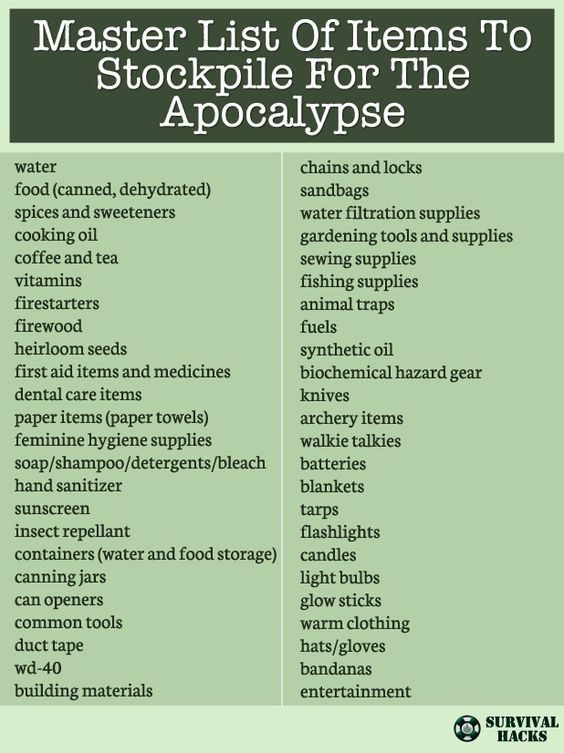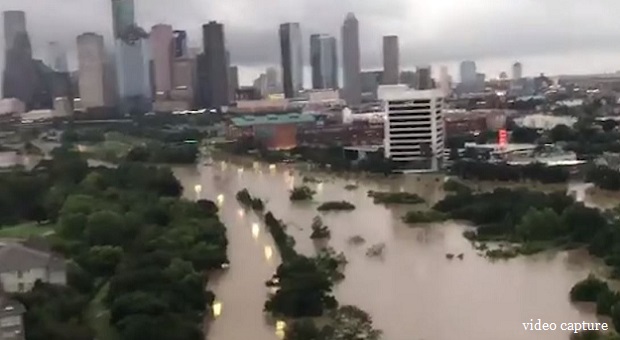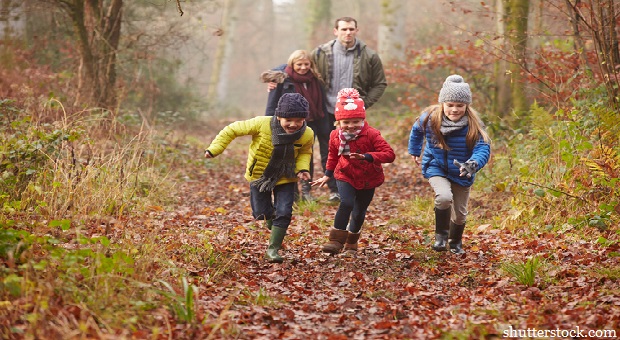The recent arrival of Hurricane Harvey is somewhat personal for me. Early Friday morning, before it made landfall, radar course projections showed it heading right for my home. Since I only live 90 miles inland, we would have been hit hard by the 130 plus mile-per-hour winds and torrential rainfall.
But Harvey made a course change just before landfall and passed north of our home, leaving us safe.
But that doesn’t mean that Harvey was safe by any means.
As a Category 4 hurricane, Harvey’s winds are strong enough to tear buildings apart. It has dumped somewhere over nine trillion gallons of water on Texas, devastating Corpus Christi, Houston and many smaller towns.
While there has only been five reported deaths as of this writing, billions of dollars worth of property has been destroyed. This hurricane could very well be the most devastating to hit our country since Katrina, topping Sandy in total dollars of destruction.
Part of what has made Harvey so destructive is that it has moved very little since hitting the Texas coast, dumping trillions of gallons of water in what is really a rather small amount of space. By the time all is said and done, Houston is projected to end up receiving around 50 inches of rain.
This rain is what is going to end up causing the biggest part of the damage, as the winds started dying down as soon as Harvey made landfall. By the time the weekend was over, less than 48 hours after hitting, Hurricane Harvey had been downgraded to a tropical storm.
But I’m sure that’s no consolation to the residents of Houston, Galveston and the surrounding areas, whose homes have several feet of water flooding them. Many of those homes will never be the same.
Harvey isn’t done with its destruction either.
As of this writing, the storm is still dumping rain on Houston, as well as moving farther to the east. Louisiana seems to be next on its dance card, as the storm moves towards the northeast. Lake Charles is already experiencing Harvey’s wrath and New Orleans could be in for some heavy rainfall as well, before it’s all over.
As with every natural disaster, nature couldn’t care less about the devastation that it is causing. We think we are so powerful, with our technology and our machines, but all it takes is one storm to break down this house of cards we call civilization.
Maybe it’s Time to Refocus Our Prepping
It’s no wonder that prepping is growing in the United States. The American people are finally waking up to something our ancestors knew, that life is fragile and nature is a killer. Even without the help that we humans give it in killing our fellow man, nature does a good enough job on its own, killing thousands of people per year.
As preppers, we love to talk about preparing for “the big one.” It doesn’t matter that that big one is a total breakdown of society, a financial collapse, an EMP attack or a zombie apocalypse, we have a plan for it.
But the reality is, we’re much more likely to face a natural disaster in our lifetimes, than any of the major disasters that we prep for.
Granted, much of the same preps need to be made for a natural disaster as those we need to make to survive a hurricane. More than anything, it’s the aftermath we’re prepping for, not the disaster itself.
Living through the destructive power of a hurricane or other natural disaster may be difficult, but nobody is going to starve or die of dehydration in a few hours or days. Living through weeks of outages, when there is no power or water and the grocery stores are empty is what we prepare for.
While the effects of an EMP are nationwide, on a local level they aren’t much different than any other disaster. The big difference is that Uncle Sam won’t be coming in to rescue us and help us to restore our lives. That’s going to have to happen on a local level, because the communications necessary to do anything on a national level won’t exist anymore.
What that means is that the aftermath is going to be much longer, straining our ability to survive, even if we are prepared.
But food is food and water is water. We will need both to survive anything that comes our way. Likewise, we will need most of the other things we stockpile. Even so, there are specific things that we will need, which are totally dependent on the type of disaster we end up facing.
Surviving a Flood
Hurricanes cause devastation in two ways; through wind and through water. While high winds can destroy many structures, it is ultimately the flooding that does the greatest damage. That will definitely be so in the case of Harvey, as the high winds dropped off almost as fast as they climbed.
So how do you prepare for this sort of flooding? Can you save your home, and if so, how? What can you do to survive, if your home becomes flooded, making it inhabitable?
First of all, this storm, like others in the past, demonstrates the reason why we all need a good bug out plan in place. While Houston officials didn’t call for a general evacuation, the state’s governor recommended it to those who could. This raises the question of why a general evacuation order didn’t go out.
It really boils down to experience and history. When Hurricane Rita was headed towards Houston in 2005, a general evacuation was called. Six-and-a-half million Houstonites took to the roads, creating a 100 mile long traffic jam that lasted for over a day and a half. There wasn’t enough gasoline available to fill that many vehicles, causing many to run dry and be abandoned on the road. People died from the heat, as well as from traffic accidents.
After all that, Hurricane Rita only struck Houston with a glancing blow, not even worth the effort that had been taken to avoid it. Hurricanes are always unpredictable, and this is just one more example of how the best of our planning may only be for naught.
We cannot rely on the government to tell us when to evacuate; we’ve got to make that decision for ourselves.
In the case of Hurricane Rita, the city government was wrong in telling people to evacuate. Now, in the case of Hurricane Harvey, the city government was wrong in telling people to stay home. But in both cases, the decision that was made was based upon the best information available. It’s just that nature doesn’t follow our information.
Waterproof Your Stockpile
I don’t know how much money you have invested in your survival stockpile, but I’m sure it’s in the thousands. Food is expensive, so if you’re going to have enough to last you any time, you’re going to have to spend a lot of money.
That’s an asset you can’t afford to lose, even in a flood. So you want to make sure that you won’t. How? By doing everything you can to ensure that it is waterproof. Canned goods already are, so that’s not an issue. Dry foods stored in five gallon buckets are waterproof as well. But what about everything else? How’s your toilet paper supply; is it protected from the water?
In some cases, you can ignore waterproofing if you can store the items on the second floor of your home. I have a lot stored under the second floor eaves of my home, where it is fairly well protected from flooding. Unless the roof gets torn off my home, I won’t have to worry about losing it.
But many people have their stockpile in the basement of their home; the first place that will flood. If that’s the case, you want to be extra careful about waterproofing it. You also want to have a plan for moving those supplies upstairs, if your home starts to flood. Otherwise, you won’t be able to use any of them until the flood waters subside, simply because you won’t have access to them.

Another possibility for protecting your stockpile is to keep some of it off-site, hopefully on higher ground. That way, if your home floods, you will still have access to supplies. You can use the remotely stored supplies until your home gets to the point where you can have access to those supplies once again.
Keep in mind that your supplies are more for surviving the aftermath, than for surviving the disaster itself.
So just because your home floods and your supplies are underwater, doesn’t mean that you’ve lost them, assuming that they are properly waterproofed. You will need those supplies as you are trying to salvage what you can from your home and put your life back together.
Protect Your Home
American homes don’t handle flooding well. They are not made of materials that can withstand sitting in water for minutes, let alone days. Drywall will soak up water rather quickly, falling apart. Even the structural studs and plywood that makes up the wall structure, floors and outer sheathing of our homes can be destroyed by too much water.
Chances are that if your home floods and the flood waters stay in place for days, your home will be totally destroyed. But if the flood abates quickly, you may be able to salvage it. Carpeting, drywall and other materials will need to be replaced; but if the structural part of your home survives, it can be rebuilt.
In Mexico and in many other emerging countries, homes are built out of cinder blocks and cement. While that may not make for as nice a home, it handles flooding much better.
I have some friends in the state of Tabasco, in Mexico, whose home has flooded several times. In each case, they’ve moved the furniture to the second floor and waited it out. Once the flood waters abated they were able to clean their homes up, repaint them and put their lives back together. That’s a whole lot easier than rebuilding an American home.
Since our homes are not made that way, we need to consider trying to protect them from flooding altogether. That may be too expensive for any of us to do, but we should at least look at it.
The most common way of protecting a home or other building from flooding is to make a wall of sandbags around it, with space between the sandbags and the home. That way, any water that seeps in can be pumped out; and yes, water will seep in.
Doing this takes a lot of sandbags and a lot of sand. The wall has to be unbroken all the way around, with all of it built to a uniform height. One dip or gap makes the whole thing invalid, as the water can pour through that one spot, flooding your home.
There are other, more modern options, which have been developed for use, instead of sandbags. While these are probably more expensive than building a sandbag wall, they are also probably easier to use. essentially the idea is to create a wall out of water filled plastic tubes, two to three feet in diameter.
This wall does the same thing that the sandbag wall does, but is considerably easier to erect. A couple of different companies make these tubes, so you might want to look into them.
Stay Prepared to Bug Out
No matter what you do, always keep yourself ready to bug out. Let’s say that you decide to ride out a hurricane that’s heading for your city, like the people in Houston did. That’s your decision to make. But don’t leave yourself without options. Make sure you always have a way to escape, should it come down to that.
What do I mean by that? Either have a four-wheel-drive vehicle that is high enough to ford the waters or some sort of boat, even a raft, that you can paddle out of there. if your answer is a truck or SUV, then make sure you leave before the water gets too deep to use it.
If it’s a boat, you’ve got more time. But in that case, you want the boat ready to use, moored to your home, where you can get into it from a second-story window.
Granted, a boat is an expensive investment, especially if you’re not going to use it for fishing. But a rubber life raft is much cheaper. For that matter, a large air mattress will work, if you don’t have anything else. Just make sure that you always leave yourself an option, so that you don’t have to go down with the sinking ship.
Whatever you do, stay lert and be prepared to face the unexpected, so you and your family survive!
This article has been written by Bill White for Survivopedia.








Carol Schwarz | August 29, 2017
|
in addition to your good advice, someone needs to be warning readers not to walk around in flood water without boots or waders, because people don’t realize the water is contaminated and will cause diseases.
Eileen Mynes | August 30, 2017
|
Thanks, Bill Your articles inform well. I lived through my first flood when I was five. One might say that I became a prepper that day in 1964 when the Pecos River engulfed my aunt’s house. I may not have a basement full of “stuff”, but my head is full of knowledge and my vehicle always has food, blankets, medical supplies, and at least half a tank of gas in it.
Pingback:Puerto Rico: A Real Life Case Study In Surviving The Worst | Survivopedia | October 11, 2017
|
Pingback:Q&A On Storing Meat Without Refrigeration In Hot Areas | Survivopedia | June 11, 2019
|